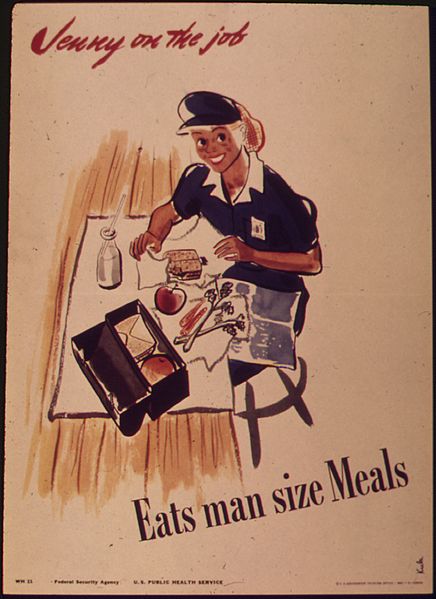För ett tag sedan skrev jag ett inlägg om hur dåliga vi människor är på att bedöma när vi har ätit tillräckligt. Jag refererade då till en studie som visade att personer som åt soppa i skålar som utan deras vetskap fylldes på underifrån åt betydligt mer än de som åt soppa från vanliga skålar.
En ny studie visar att hur mycket man äter beror på hur stor portionen anges vara och att detta påverkar också hur mycket man är villig att betala för maten.
Om en medelstor portion kallas normal och en stor portion kallas dubbel äter man mindre än om den stora portionen kallas normal och den medelstora kallas halv portion. Man är också villig att betala mer beroende på hur stor portionen anges vara trots att portionsstorleken i praktiken är densamma.
Det är uppenbart att människan är dålig på att reglera sitt födointag när man saknar referenser. Studien visar dock att regleringen kan underlättas på vissa sätt. Med tanke på den fetmaepidemi vi står inför kanske det behövs ett standardmått för portionsstorlekar som kan användas som referens. Då kan alla restauranger och matbutiker ange hur mycket deras rätter ligger över eller under referensvärdet i energiinnehåll. Överförmynderi eller en nödvändighet för folkhälsan? I just detta fall verkar det som om om våra hjärnor behöver hjälp på traven för att fatta rätt beslut.

A double, please!
A while ago I wrote about how bad we humans are to know when we have eaten enough. I then referred to a study that showed that people who ate soup in bowls that, without their knowledge, were filled from below ate far more than those who ate soup from regular bowls.
A new study shows that how much people eat depends on how large people believe that the meal they are having is, and this also affects how much they are willing to pay for the food.
If a medium-sized portion is called normal and a large portion is called double people eat less than if the major portion is called normal and the medium is called half-size. They are also willing to pay more depending on how big the portion is according to the label although portion sizes are in practice the same.
It is obvious that people are poor at regulating their food intake without references. The study shows that the regulation can be facilitated in certain ways. Given the obesity epidemic we are facing perhaps there is a need for a standard measure of portion sizes that can be used as a reference. With this system, all restaurants and grocery stores can indicate how large their meals are in relation to the reference value in respect to energy content. Over patronizing or a necessity for public health? In this particular case, it seems that our brains need a helping hand in order to make the right decision.